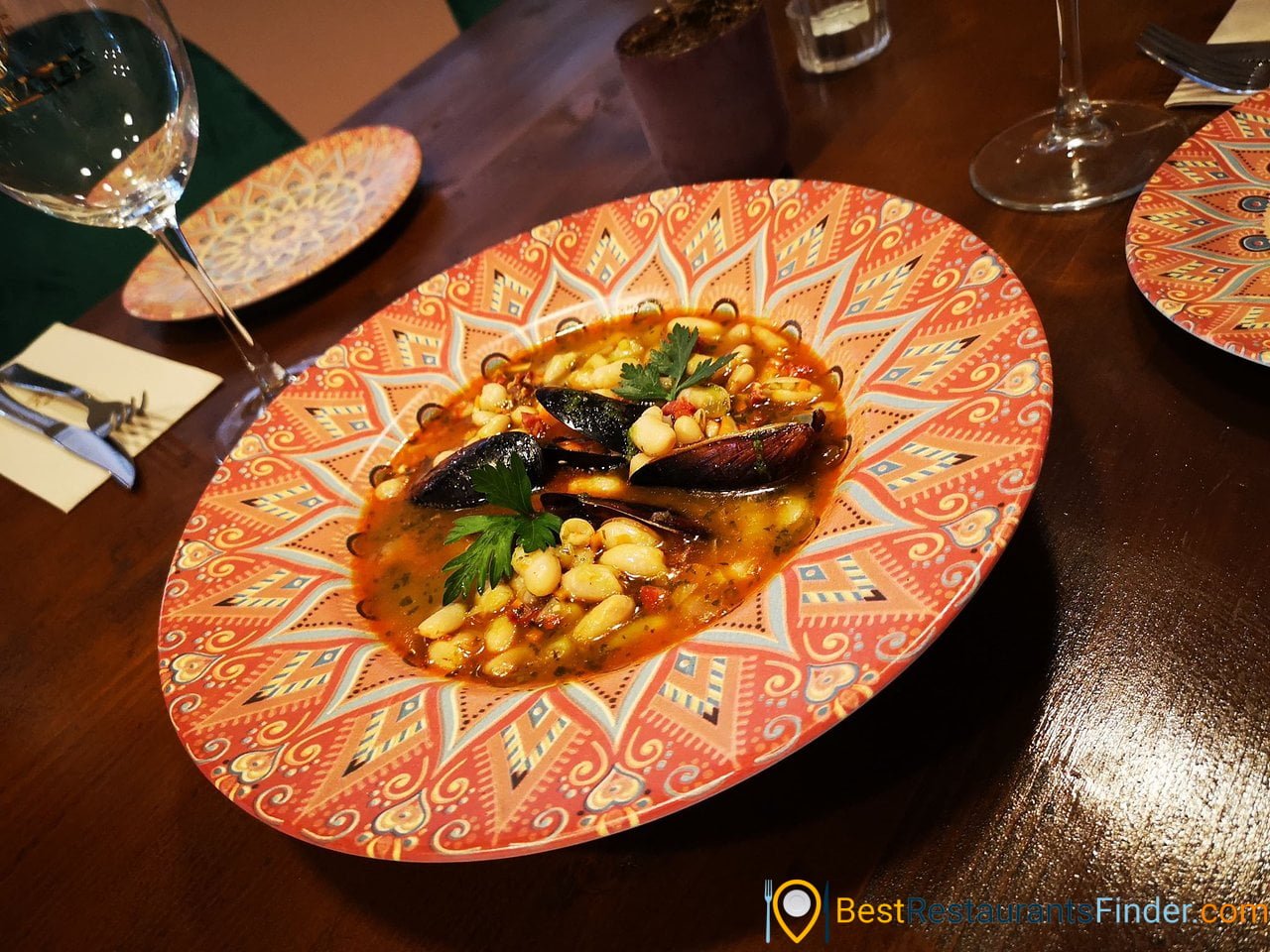Top Places in Romania to try Mamaliga – A Traditional Cornmeal Dish
Romanian cuisine is a diverse blend of different cultures and traditions, reflecting the country’s history and geography. Influences can be seen from the Slavic, Hungarian, German, and Turkish cultures, as well as the country’s rural heritage. Food plays an important role in Romanian culture and is often used to mark special occasions and celebrations.
Meals typically consist of multiple courses, with a focus on hearty, comforting dishes. Soups and stews, such as ciorba and goulash, are popular, as are meat dishes like mici (grilled minced meat rolls) and sarmale (stuffed cabbage rolls). Grilled meats and fish are also commonly eaten.
One of the most popular traditional dishes in Romania is “sarmale”, which is a cabbage or vine leaves rolls with a mixture of meat and rice, it also served with polenta and mamaliga.
Romania is also known for its delicious traditional desserts such as “cozonac” (a sweet bread) filled with chocolate, sweet cheese, and nuts, and “papanasi” which is a fried dough balls filled with cottage cheese, sour cream, and sweet jam, often served with chocolate or caramel sauce.
Wine is an important part of Romanian culture and the country is famous for producing varieties such as Fetească Neagră, Grasă de Cotnari and Tămâioasă Românească, many regions of Romania has own traditional wines.
Eating with friends and family is also a cherished tradition in Romania, and meals are often leisurely and accompanied by lively conversation. In many homes, it is customary to offer guests a shot of palinca, which is a strong, traditional spirit similar to grappa, before the meal is served.
What is Mamaliga?
Mamaliga is a traditional Romanian dish made from cornmeal that is similar to polenta in Italy or grits in the southern United States. It is a staple food in Romania and is often served as a side dish or as a main course, topped with cheese, sour cream, and/or grilled meats.
The origins of mamaliga can be traced back to ancient times, when it was a staple food for peasants and the poor. It is a relatively cheap and filling food that is easy to make, as it only requires cornmeal, water, and salt.
To make mamaliga, cornmeal is gradually stirred into boiling water, much like making polenta. The mixture is then cooked over low heat until it becomes thick and creamy. Some people like to add butter or milk to the mixture to give it a richer flavor, while others prefer to keep it simple with just water and cornmeal.
Once the mamaliga is cooked, it can be served hot as a side dish or as a main course, topped with cheese, sour cream, and grilled meats such as sausage or chicken. It is also common to add fried onions or bacon bits for added flavor.
In Romania, mamaliga is often served at family gatherings and celebrations, and it is considered a comfort food. It is a versatile dish that can be served with a variety of toppings, making it a popular choice for both casual and formal occasions.
Mamaliga is a tasty and economical dish that has been enjoyed in Romania for centuries. It is a simple yet satisfying food that is sure to be a hit with any crowd.

Traditional recipe for Mamaliga
Here is a traditional recipe for making mamaliga:
Ingredients:
- 1 cup cornmeal
- 4 cups water
- 1 tsp salt
- Optional: 2 tbsp butter or milk
Instructions:
In a large saucepan, bring the water to a boil.
Slowly add the cornmeal to the boiling water, stirring constantly to prevent clumps from forming.
Add the salt and continue stirring until the mixture becomes thick and creamy.
If desired, add the butter or milk to give the mamaliga a richer flavor.
Reduce the heat to low and continue cooking the mamaliga for an additional 5-10 minutes, stirring occasionally.
Serve the mamaliga hot, topped with cheese, sour cream, and grilled meats if desired. Enjoy!
Note: The ratio of cornmeal to water can be adjusted to achieve the desired consistency. Some people prefer a thicker mamaliga, while others prefer a softer, more porridge-like consistency. Experiment to find the texture that you prefer.
Modern recipe for Mamaliga
Here is a modern twist on the traditional recipe for mamaliga:
Ingredients:
- 1 cup cornmeal
- 4 cups chicken broth
- 1 tsp salt
- 2 tbsp butter
- 1 cup grated cheese (such as cheddar or feta)
- 1/4 cup chopped fresh herbs (such as parsley, basil, or chives)
Instructions:
- In a large saucepan, bring the chicken broth to a boil.
- Slowly add the cornmeal to the boiling broth, stirring constantly to prevent clumps from forming.
- Add the salt and continue stirring until the mixture becomes thick and creamy.
- Stir in the butter and cheese until the cheese is melted and well-incorporated.
- Reduce the heat to low and continue cooking the mamaliga for an additional 5-10 minutes, stirring occasionally.
- Stir in the chopped herbs.
- Serve the mamaliga hot, topped with additional cheese and herbs if desired. Enjoy!
This modern version of mamaliga adds flavor and richness with the addition of chicken broth and grated cheese. The herbs add a fresh, bright flavor and make for a visually appealing dish.
Best Restaurants in Romania to try Mamaliga
Here are some of the best restaurants in Romania where you can try Mamaliga as well as other traditional romanian food.
- Restaurant Caru’ Cu Bere in Bucharest – traditional Romanian restaurant dating back to 1879.
- Restaurant Roata in Cluj-Napoca – traditional Romanian restaurant that serves dishes from Transylvania and other Romanian regions.
- Restaurant Ograda in Brasov – serving Romanian food with a twist.

In conclusion, Mamaliga is a traditional Romanian dish made of cornmeal that is cooked until it reaches a soft, porridge-like consistency. It is often served with cheese, sour cream, or other toppings and is a staple food in Romanian cuisine. Its versatility and simplicity make it a popular choice for both everyday meals and special occasions. It has a rich history and cultural significance in Romania, and its popularity has spread beyond the country’s borders, making it a beloved dish around the world.